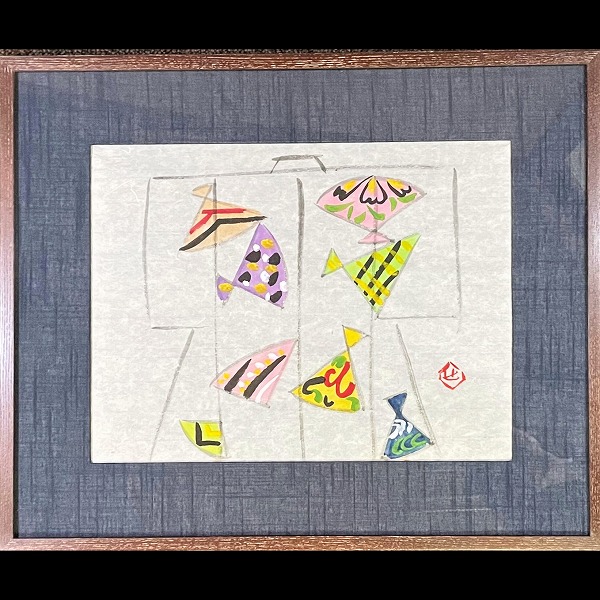
SOLD
Size (Flame):D.48cm×57cm
ink on paper
It is decorated with colorful fans. This pattern is used on kimono and is also called "fan pattern" or "suehiro pattern." It is an auspicious and lucky pattern because the end spreads out (suehiro). Each fan has a different picture inside, which is fun to see. The inscription "Se" is written on the lower right. Keisuke Serizawa read Muneyoshi Yanagi's "The Way of the Craftsman" and was deeply impressed. The beauty of Okinawan Bingata strongly impacted him and he decided to become a dyeing artist. Then, as a dyeing artist, he was recognized as a Living National Treasure in "kata-e zome". In addition to dyeing, he was also active in a wide range of other fields, including bookbinding, glass painting, plate painting, pottery painting, and signboard and lighting design.
Keisuke Serizawa
1895 – 1984
He was a Japanese textile designer. In 1956, he was designated as a Living National Treasure by the Japanese government for his katazome stencil dyeing technique. A leading member of the mingei movement founded by Yanagi Sōetsu, Serizawa visited Okinawa several times and learned the Ryūkyū bingata techniques of dyeing. His folk-art productions included kimono, paper prints, wall scrolls, folding screens, curtains, fans, and calendars.
In 1981, the Municipal Serizawa Keisuke Art Museum was opened in the city of Shizuoka. Other museums that hold his work include the Brooklyn Museum, the Metropolitan Museum of Art, the Harvard Art Museums, the Seattle Art Museum, the British Museum, the University of Michigan Museum of Art, and the Museum of New Zealand.
Contact about the Item